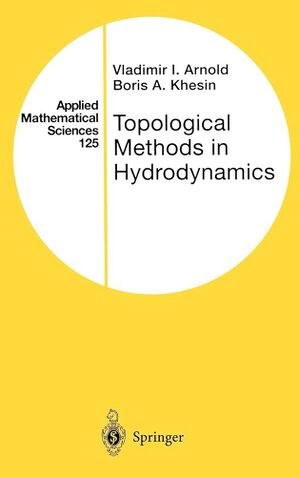Fluid Mechanics (Book): Difference between revisions
mNo edit summary |
mNo edit summary |
||
| Line 12: | Line 12: | ||
}} | }} | ||
Continuum mechanics and fluid mechanics in particular are unusual as branches of mechanics. It has the most apparent relevance to geometry yet its development in this aspect is not as popular, and theory initially lagged behind the basic physical features - there was no account for drag. This was corrected towards the end of the 19th century, as physics developed overall and computational techniques coming directly from theory began (and still do) dominate. Most recently, Vladimir Arnol'd helped to show topological aspects of fluid mechanics: ideal fluid flows are geodesics in the infinite dimensional diffeomorphism group. The difficulties in describing turbulence persist, and it remains a testament to the difficult of describing dynamics at multiple interacting scales. The Reynolds number expresses the scale invariance of specific phenomena, and is the entry point to the study of turbulent flows. Because of the prevalence of computational methods, fluid mechanics is also a great entry point to the general study of numerical computing. | Continuum mechanics and fluid mechanics in particular are unusual as branches of mechanics. It has the most apparent relevance to geometry yet its development in this aspect is not as popular, and theory initially lagged behind the basic physical features - there was no account for drag. This was corrected towards the end of the 19th century, as physics developed overall and computational techniques coming directly from theory began (and still do) dominate. Most recently, Vladimir Arnol'd helped to show topological aspects of fluid mechanics: ideal fluid flows are geodesics in the infinite dimensional diffeomorphism group (such Lie groups also appear in QFT and CFT). The difficulties in describing turbulence persist, and it remains a testament to the difficult of describing dynamics at multiple interacting scales. The Reynolds number expresses the scale invariance of specific phenomena, and is the entry point to the study of turbulent flows. Because of the prevalence of computational methods, fluid mechanics is also a great entry point to the general study of numerical computing. | ||
Numerical methods are still young, Monte Carlo was developed during the Manhattan Project, and software tools stick to rudimentary approaches to rely on high performance computing. As with our previous philosophy, the future is in geometric physics - numerical methods which preserve differential-geometric structures. | Numerical methods are still young, Monte Carlo was developed during the Manhattan Project, and software tools stick to rudimentary approaches to rely on high performance computing. As with our previous philosophy, the future is in geometric physics - numerical methods which preserve differential-geometric structures. | ||
Revision as of 18:55, 20 September 2023
| Quantum Electrodynamics | |

| |
| Information | |
|---|---|
| Author | Lev Landau |
| Language | English |
| Series | Course of Theoretical Physics |
| Publisher | Pergamon |
| Publication Date | 1987 |
| Pages | 560 |
| ISBN-13 | 978-0-08-033933-7 |
Continuum mechanics and fluid mechanics in particular are unusual as branches of mechanics. It has the most apparent relevance to geometry yet its development in this aspect is not as popular, and theory initially lagged behind the basic physical features - there was no account for drag. This was corrected towards the end of the 19th century, as physics developed overall and computational techniques coming directly from theory began (and still do) dominate. Most recently, Vladimir Arnol'd helped to show topological aspects of fluid mechanics: ideal fluid flows are geodesics in the infinite dimensional diffeomorphism group (such Lie groups also appear in QFT and CFT). The difficulties in describing turbulence persist, and it remains a testament to the difficult of describing dynamics at multiple interacting scales. The Reynolds number expresses the scale invariance of specific phenomena, and is the entry point to the study of turbulent flows. Because of the prevalence of computational methods, fluid mechanics is also a great entry point to the general study of numerical computing.
Numerical methods are still young, Monte Carlo was developed during the Manhattan Project, and software tools stick to rudimentary approaches to rely on high performance computing. As with our previous philosophy, the future is in geometric physics - numerical methods which preserve differential-geometric structures.


